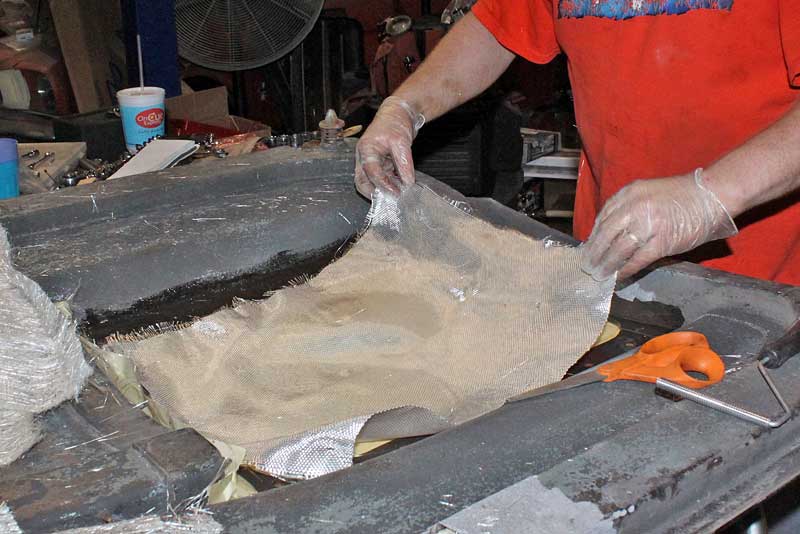Are you desperately in need of how to get mold out of clothes? But then, what is this mold all about? Mold is a fungus that develops on all surfaces.
Both indoors and outdoors, spores are prevalent, and they prefer conditions that are damp. It smells strongly and disagreeably, in addition to possibly leading to health issues.
A few techniques are needed to get rid of the growing organism and stench of mold, which spreads at the first possible chance.
Fortunately, a range of synthetic and natural remedies are accessible. Additionally, you have the option to dry clean, hand wash, or use a washing machine. We’ll provide you with various mold removal tips for either choice.
Table of Contents
Understanding the Mold Signs
The most obvious sign that microscopic occupants have taken over your garments is a strong, nasty scent. However, there are a few other indicators to help determine whether spores are present:
Stains: While mold is often green or black in color, some spores may exhibit red or orange hues. The location, age, and source of nutrients for the mold all affect its shade.
Allergies: Runny nose, itchy eyes during clothing changes, and sneezing can also indicate the presence of foreign invaders.
Skin rash: Direct contact with moldy clothing may cause a skin reaction.
Read Also: How Do Sewer And Septic Systems Work?
Why Eliminate Mold from Clothes?
Usually, the smell of the mold is enough to spur you on to action. In instances where spores are scarce, the odor may not be as potent. It may be tempting in this situation to overlook its presence or put off getting rid of it.
1. To Avoid Health Issues
Mold affects people in different ways. Some people may have severe allergic reactions, asthma, or other respiratory disorders, while others may not exhibit any symptoms.
Kids are especially vulnerable to mold. According to studies, young children who are exposed to the fungi have a higher chance of acquiring asthma by the time they are seven years old.
2. Is to Stop Further Mold Growth
You may believe that the growth of mold on your clothes is a specific problem. Spores can actually spread quicker and farther than you may imagine because they are airborne. Perhaps your clothing are only the doorway to your house. Therefore, getting rid of the bacteria as soon as you believe it is present is essential.
Remember that spores can endure harsh environments, such as bright, dry weather, and can even hibernate in them. Within 24 to 48 hours, they will flourish and spread when winter or humidity sets in.
Read More: Jew Plant: All You Need to Know About Jew Plants
3. Maintain the Quality of Your Clothes
These germs not only look and smell horrible, but they also damage clothing made of natural fabrics. Consequently, color fading and fabric weakening occur over time.
How to Get Mold Out of Clothes
Regardless of the washing method you use, there are multiple ways to get rid of mold from your clothing.
#1. Cleaning Methods
Do you wash your clothes in a machine on a regular basis? Would you rather wash by hand? You might even go to the dry cleaners. Here is the easiest way to get rid of mold for each strategy.
Automated Cleaning (Washing Machine)
It can be sufficient to wash and dry the clothing if the infestation isn’t too bad. The majority of fungal species can be fatally affected by water that is over 140 degrees Fahrenheit.
Sort the contaminated clothing: Avoid combining moldy clothes with clean ones as the spores spread.
Choose the mode that is the hottest: Mold won’t be affected by warm or cold water. Make sure the fabric won’t be harmed by the temperature.
Pour detergent: You may utilize your typical laundry soap.
By choice: Open the machine once the water is added, then add the vinegar, bleach, borax, or other substances listed below. Use the separate container next to the laundry detergent one for front-loading machines.
Wash: Give your machine two complete cycles. Checkout this content on: How Apartment Leases Work | Step By Step Explanation
Dry your clothing in the sun; it naturally destroys fungi (8). Hang your damp clothing outside in the sun.
Drier option: After the second cycle is finished, immediately move the garments to your dryer.
Manual Washing (Hand Wash)
Maybe all you need is a big pail of hot water to wash one item of clothing or towel.
Fill: Fill a big bowl or bucket with hot water.
Add detergent: Use one cup of dishwashing liquid.
Create a homemade or store-bought mold remover by combining any or all of the components listed below.
Soak: Insert the cloth and let it sit for a minimum of twenty minutes.
Rinse and dry: Adhere to the machine wash directions.
Dry Cleaning
If drying cleaning is the only option for your clothing, try using a soft brush to get rid of as much mold as you can. Let an expert handle the garments by placing them in a plastic bag. Make sure you discuss the problem with your dry cleaner. You might also use this to highlight any particular mold stains you want to get off your cloth.
#2. Natural or Organic Assistance
You can experiment with a variety of natural cleaners if you value not using chemicals in your home.
Borax
Borax, a natural mold remover, changes water molecules into hydrogen peroxide when it comes into contact with hot water.
They eliminates odors in addition to being a powerful fungicide.
But borax needs some preparation and doesn’t mix well with water.
Combine: In a big basin, whisk together half a cup of Borax and hot water.
Stir gently until the mixture completely dissolves. Either use pure Borax or a detergent that contains it.
Wash: Let your clothing soak for a minimum of 20 minutes. If you’re using a washer, fill it with the liquid and give it two cycles.
Baking Soda and Vinegar
Both yeast and bacteria are inhibited by vinegar. It should come as no surprise that it works well as a natural cure for most molds.
On the other hand, baking soda helps absorb moisture and eliminate odors by changing the PH level of the fabric. Consequently, the two substances combine to effectively remove mold from your clothing.
First washing cycle: Fill your washing machine with one cup of white vinegar. Add no detergent at all.
Add half a cup of baking soda for the second washing cycle.
Related: How to Remove Scratches from Stainless Steel Appliances | Full Guide
Tea Tree Oil
Possibly one of the best treatments for getting rid of mold and fungus is tea tree oil. When compared to other cleaning supplies, the oil could initially look like a costly purchase. You can remove mold over a number of sessions with a little, concentrated container, though.
There are significant differences in quality between different brands of this essential oil. So be sure the oil you buy is pure, not synthetic, and additive-free. If not, you could get different kinds of grease stains on your clothing.
Mix: Take one cup of boiling water and one teaspoon of tea tree oil. Transfer the blend into a spray bottle.
Spray: Give the cloth a good, deep spray on both sides and the interior.
Soak: Before washing, give the combination at least ten minutes to work its magic.
Wash: You can pour the remaining bottle contents into your washer or hand-washing pail.
If you don’t like the smell of tea tree, clove oil works just as well and is a substitute.
Hydrogen Peroxide
Hydrogen peroxide treatment has demonstrated remarkable efficacy against fungi. It is both a disinfectant and an antibacterial. It is typically applied at a low dilution—roughly three percent to get rid of mold from clothes. Just apply it using the same technique as for the essential oils.
#3. Use Commercial Assistance
If none of the ingredients above are available to you, the following techniques may still work just as well.
Both a Brush and Detergent
You can utilize an outside workshop or a well-ventilated space for this procedure. Spores can move fast to other surfaces and possibly enter your lungs, so keep that in mind.
Select a brush with gentle bristles to prevent tearing the fabric. Use a toothbrush instead of a sponge for cleaning a tiny area. Make every effort to get rid of the mold.
Spray: Douse the clothing in a liberal amount of stain remover or commercial detergent.
Soak: Allow the liquid to seep through completely, about half an hour.
Wash: Use hot water to hand-wash or machine-wash.
Also see: How to Run Your House Solely on Solar Power | Starter Guide
Detergent and Brush
You can utilize an outside workshop or a well-ventilated space for this procedure. Spores can move fast to other surfaces and possibly enter your lungs, so keep that in mind.
Select a brush with gentle bristles to prevent tearing the fabric. Use a toothbrush instead of a sponge for cleaning a tiny area. Make every effort to get rid of the mold.
Spray: Douse the clothing in a liberal amount of stain remover or commercial detergent.
Soak: Allow the liquid to seep through completely, about half an hour.
Wash: Use hot water to hand-wash or machine-wash.
How to get mold out of clothes.
Make Use of Bleach
One effective way to eradicate mold and associated allergens is with bleach (14). Bleach is sometimes combined with borax for increased effectiveness because it exclusively gets rid of mold from non-porous surfaces.
Put one cup of bleach in the machine. Commercial bleach-containing products are also an option.
Hand wash: Put a big bowl of boiling water with the cup of bleach in it. After a few hours, let the solution soak and then rinse with ordinary detergent.
How Not Allow Mold on Clothes
Preventing mold on clothing is still the most straightforward way to get rid of it. Here are some pointers:
How to get mold out of clothes.
1. Ensure You Dry It As Fast As Possible
After washing your garments, don’t store them damp. As soon as possible, remove them from your washer and dry them outside or in a dryer. Mold is more likely to grow the longer they remain moist or even wet.
Remember that mold grows not just in your washing machine but anywhere there is moisture. It is also present on shoes, clothing, and wet swimsuits that have been stored in plastic bags. Take them out as soon as you arrive home, and hang them to dry if you can’t wash them right away.
2. Avoid Spraying
Apply a tea tree oil and water combination to clothing every two days, following the above instructions. To start, it will leave a clean scent in its wake. Furthermore, any mold spores that made it into your closet would be eliminated before they could spread.
SEE: What are Straw Bale Houses?
3. Maintain a Low Moisture Level
Do you frequently have moldy garments in your house? Not sure what’s causing it all? When the relative humidity rises above 60%, mold grows. Therefore, the key to prevention is to keep moisture levels as low as possible.
Sufficient Ventilation
Make sure the air in your house and closets is fresh. To let in fresh air, open your windows and turn on your ceiling fans. In order to improve ventilation, we also suggest placing your furniture a few inches away from the wall.
Keep in mind that mold spores are dynamic. Thus, to prevent your carpets from becoming a point of entry, make sure they are kept dry and clean.
Close all of the windows on wet days to avoid the dampness.
Make Use of a Dehumidifier
One easy and effective technique to manage the humidity levels in your house is with a dehumidifier. Put the dehumidifier next to your clothes. You can accomplish this whether your clothing are kept in the closet in your room or in your basement. Place it next to your drying rack if you must dry your clothing indoors.
How to get mold out of clothes. READ: How to Clean a Swimming Pool: Quick Maintenance Guide
Verify the Filters
Check your HVAC filters lastly. Generally speaking, any heating, cooling, or ventilation system has screens. Every one to three months, change the filter to stop mold and allergies from building up and spreading.
Frequently Asked Question
Allergy symptoms like watery eyes, runny noses, sneezing, itching, coughing, wheezing, headaches, and exhaustion can be brought on by a high level of mold spore exposure. An individual’s sensitivity may rise with repeated contact to mold, leading to increasingly severe allergic reactions.
Microscopic fungi called molds inhabit plant and animal substances. Both indoors and outdoors, they are a part of the natural world. Because they break down and digest organic material, they have a significant impact on the ecosystem.
Mold is a fungal growth that grows on different types of moist or decomposing organic waste; it is not the same as bacteria. There are numerous species of mold, and they are available in a wide range of colors. Some people refer to molds as mildew.
The smell of mold is frequently described as musty. According to others, the smell of mold is earthy or meaty, like that of rotting wood or wet socks. Many residents find the fragrance to be overpowering and disagreeable. Mold has the ability to release gases called microbial volatile organic compounds, or MVOCs, as it grows.





